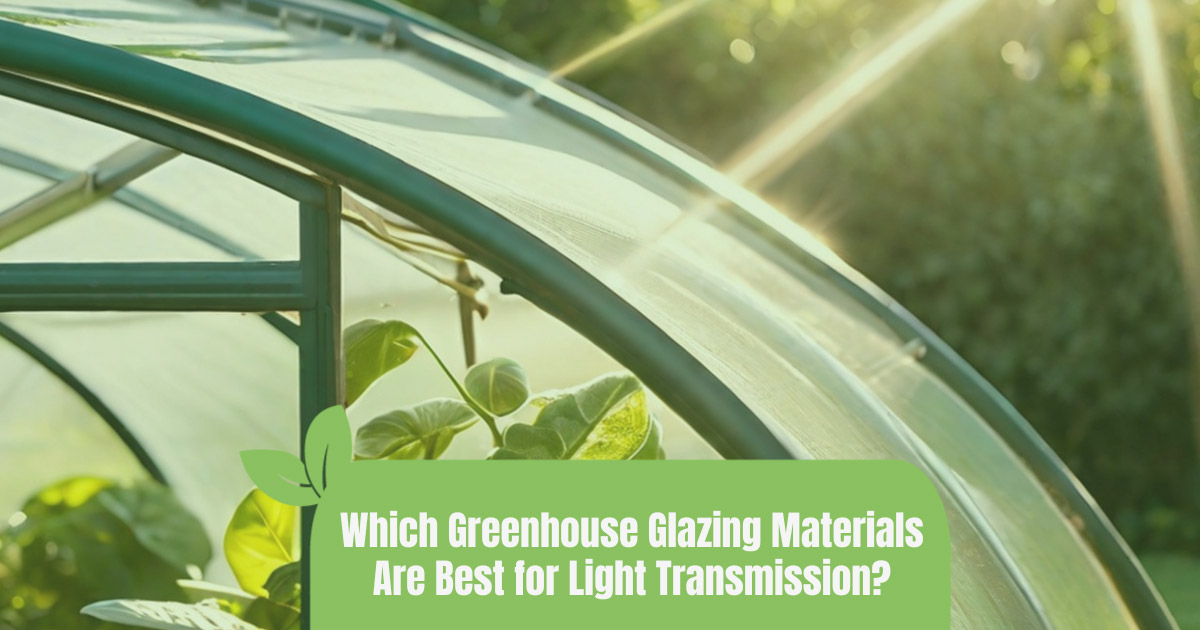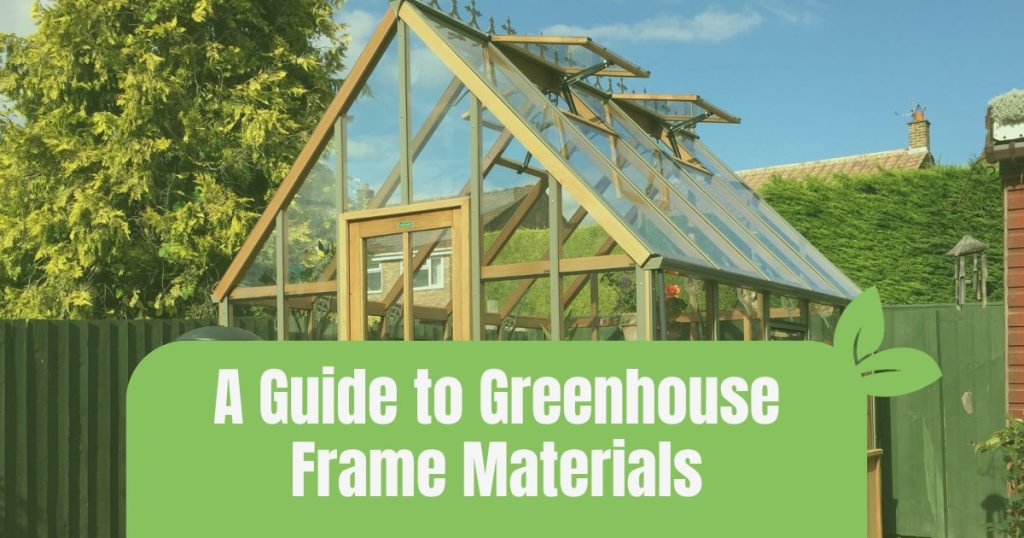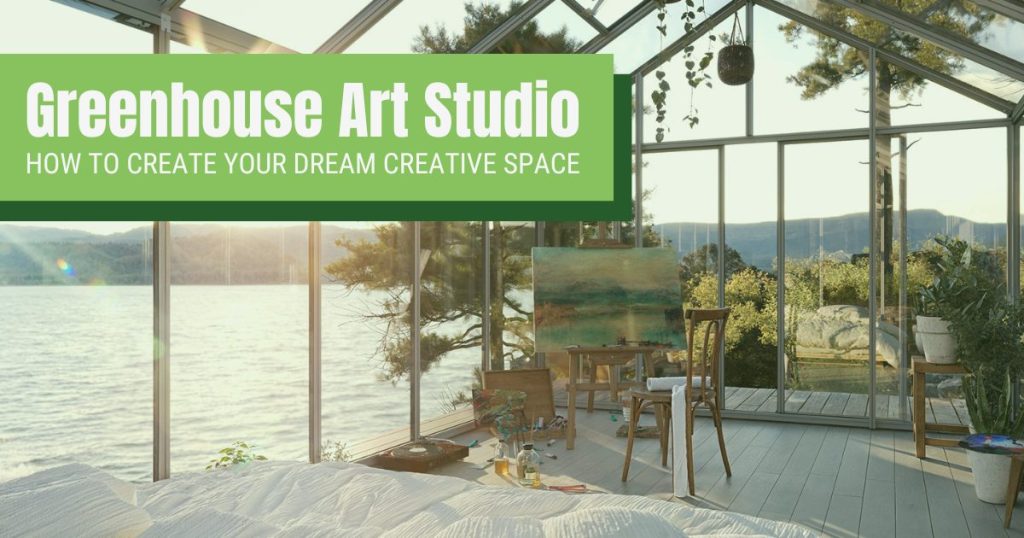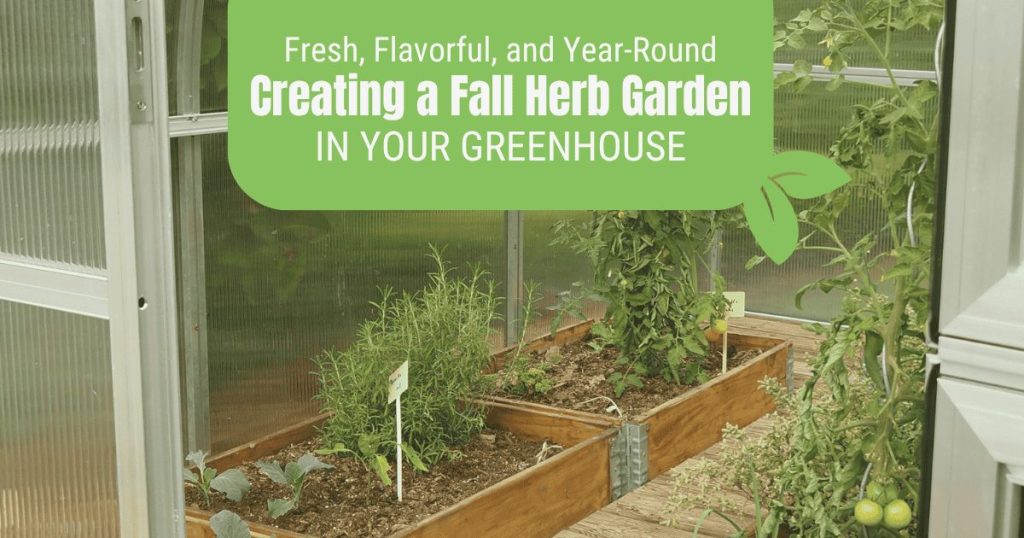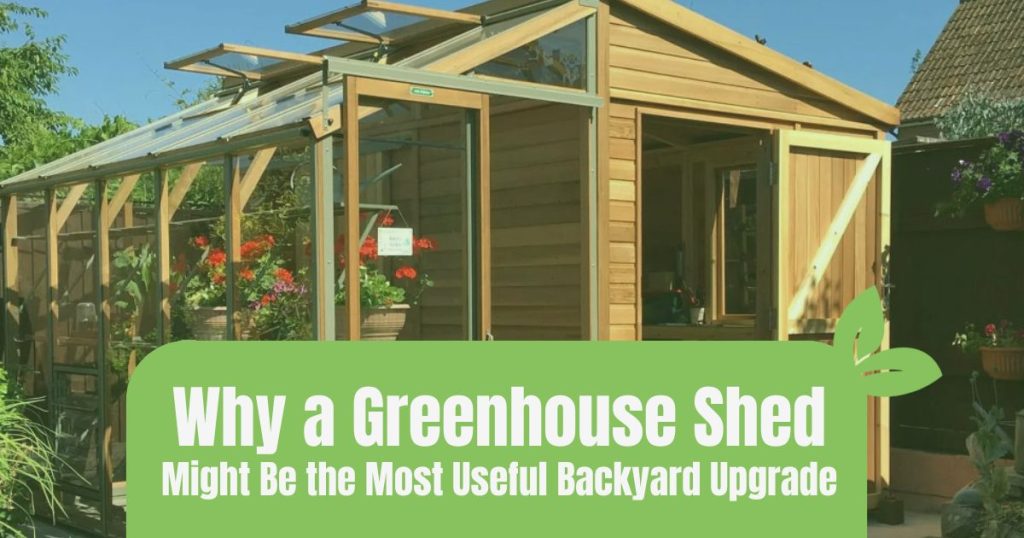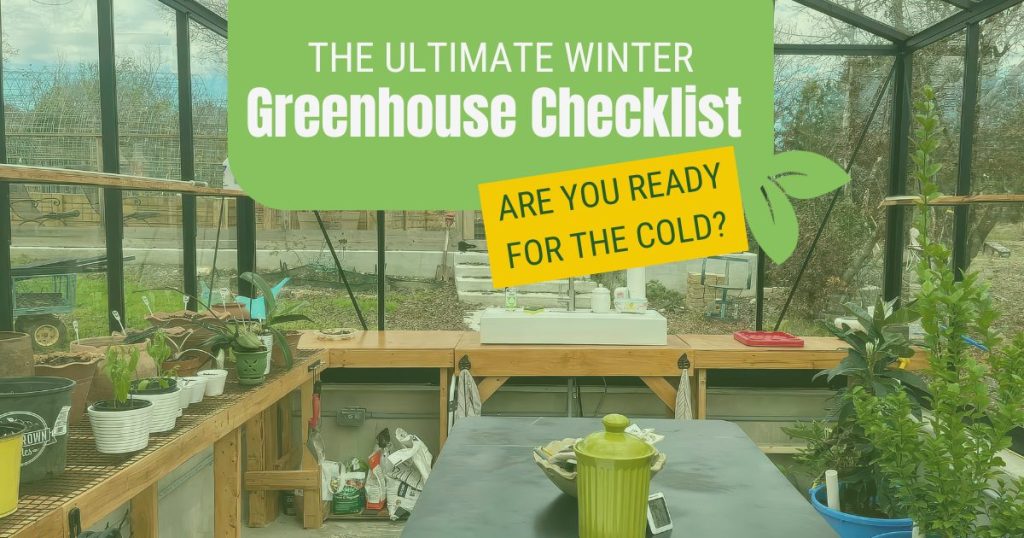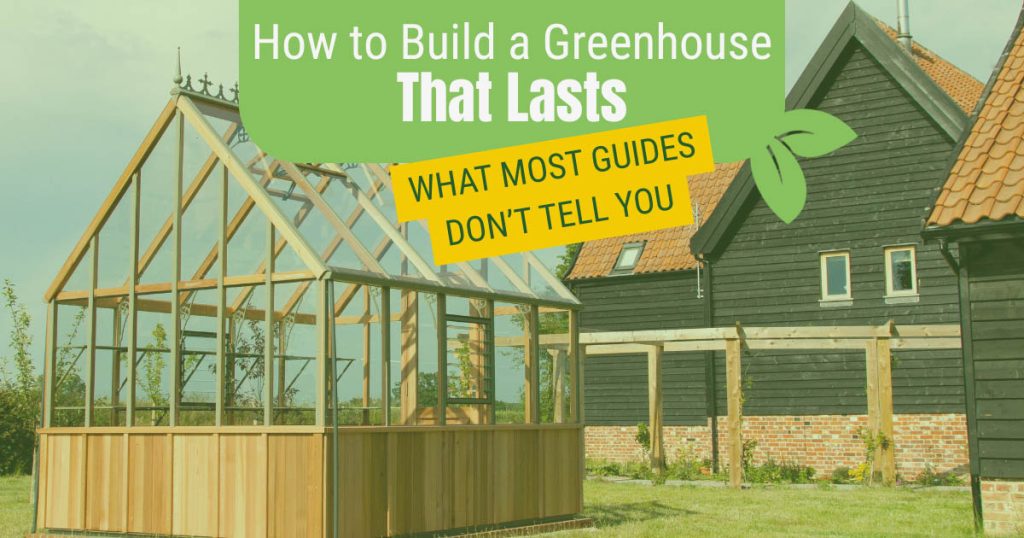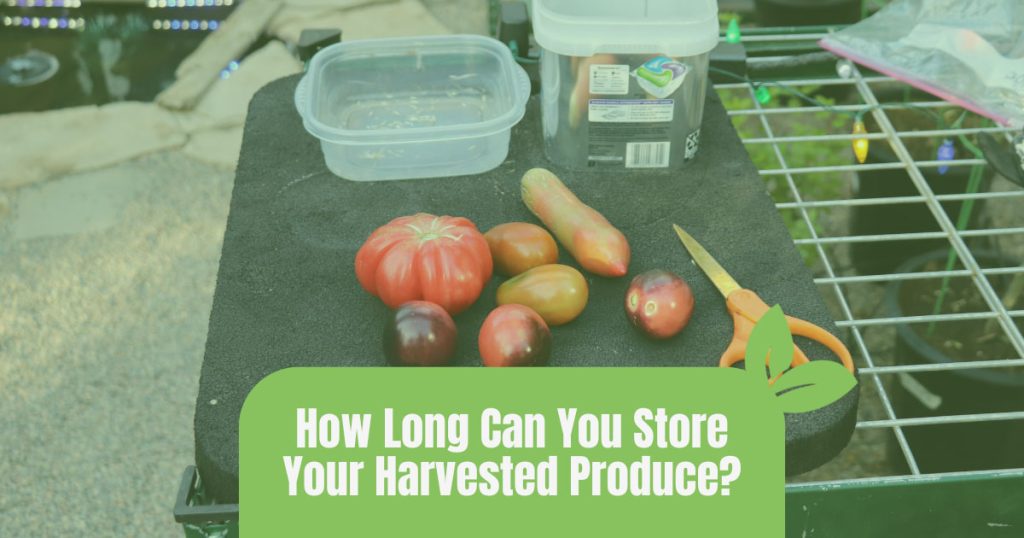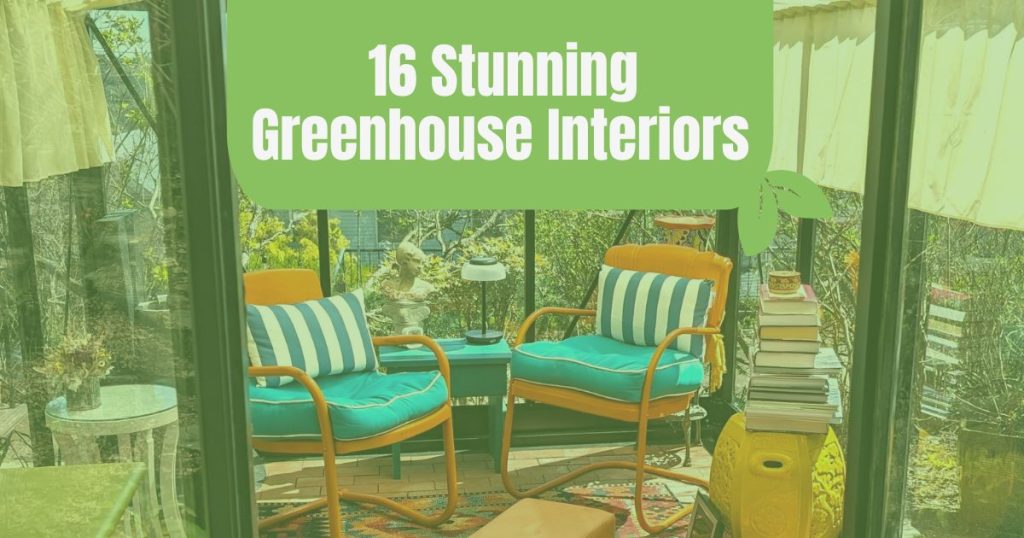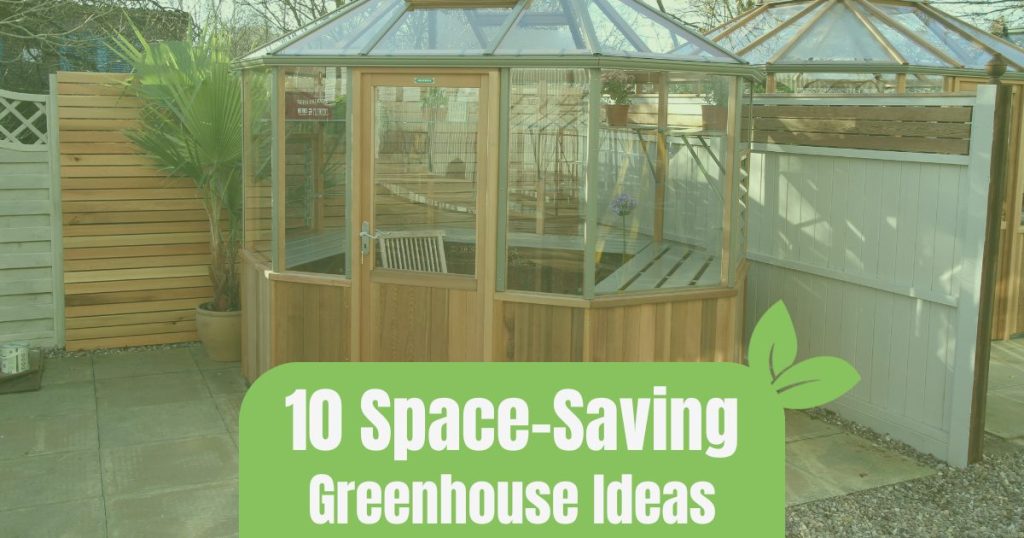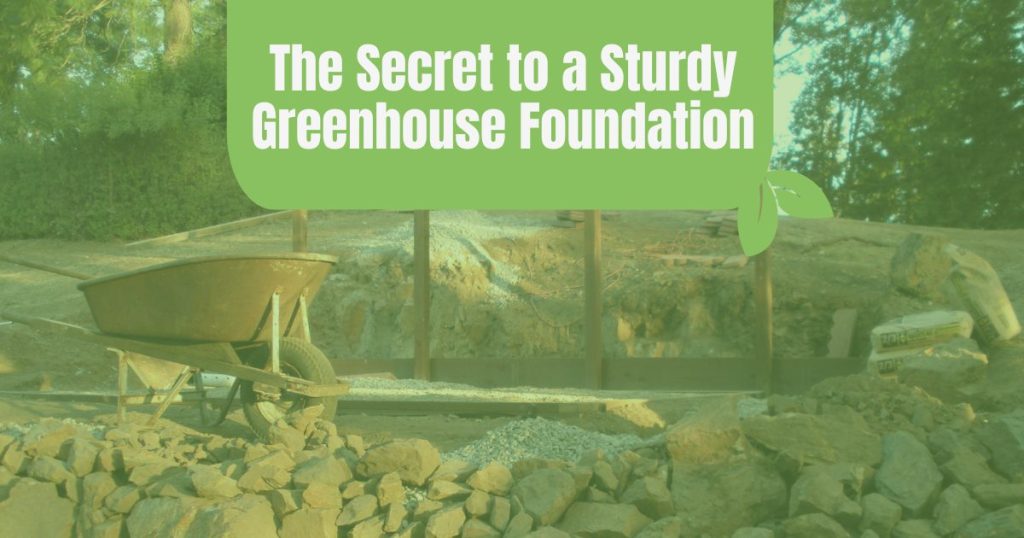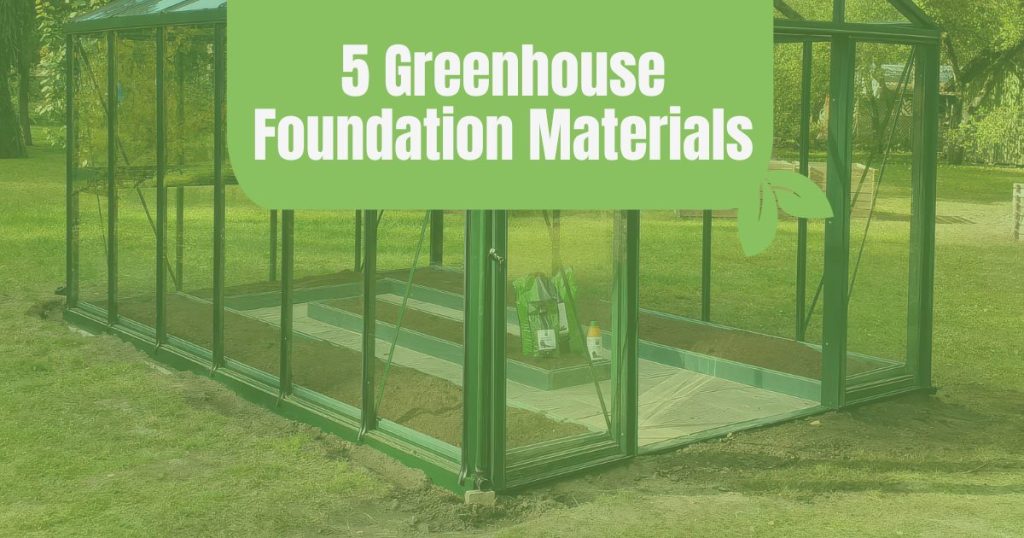



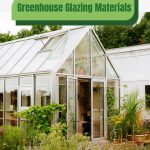
Setting up your greenhouse can be both daunting and exciting at the same time. One of your biggest decisions is choosing a glazing material, which not only protects your plants from extreme weather conditions such as high winds, but also allows in one of the most important factors for plant growth: light.
Getting your greenhouse-grown plants the right amount of sunlight they need to thrive starts with choosing a greenhouse glazing material that allows for high light transmission. To eliminate some of the guesswork and help you design your ideal greenhouse, we tested various greenhouse covering materials and measured which ones offer the highest light transmittance levels. The results may surprise you!
If you’ve never heard of light transmission before today, we’ve got you covered (pun intended). In this guide we explain how light transmission works, why it’s important for a successful greenhouse, and how different materials impact your greenhouse’s natural lighting. We’ll also share our test findings so you can make the best choice for your greenhouse growing needs.
Why does light transmission matter?
Light transmission is what sets greenhouses apart from regular buildings. It allows ultraviolet light, the life force of plants, to travel from the sun through your greenhouse and ultimately to your plants. Plants need light the way we need food to survive. Without it, your plants may experience stunted or weak, leggy growth. Moreover, without enough light plants can’t produce the food they need to function, so they become more susceptible to root rot, pests, and diseases, and may eventually die.
Proper light transmission is therefore key to greenhouse design for both commercial greenhouses and hobby greenhouses. High light transmission results in larger leaves, more fruit, and more blooms. Ample light diffusion can also result in a more cost-effective greenhouse, as it can offset the cost of heating or supplemental light. In short, light transmission is key to designing a successful greenhouse.

How does light transmission work?
Understanding how light works before building or selecting your greenhouse will help you set your greenhouse up for success because it will help you choose the best material for your needs. Here’s a simplified explanation for how light transmission works:
When light hits an object, one of three things can happen: it can be transmitted, reflected, or absorbed. When light gets absorbed by an object, it takes the energy from the light waves (known as photons or light particles) and changes its energy state. In most cases, light is converted to heat. This is why items left in the sun all day feel warm to the touch. Plants absorb the light into cells called chloroplasts and convert it into energy. This is how plants absorb light for photosynthesis.
Transparent objects don’t absorb light particles but instead allow them to pass through. This is called light transmission. Depending on the material, more or less light may be transmitted. For example, tinted glass is designed to reduce the amount of sunlight transmission.
Lastly, light reflection happens when light particles encounter an object that neither absorbs nor transmits light particles. Instead, light particles bounce back and reflect a perfect image of those particles. Mirrors are the most common example of this effect.
Colors also play a role in light transmission, absorption, and reflection. For example, the color white reflects light fragments, while black absorbs all different wavelengths of light fragments. In plants, leaves contain a green pigment called chlorophyll, which absorbs the colors blue and red but reflects green.
How does light work?
Sunlight consists of a range of wavelengths, including ultraviolet (UV) rays, visible light, and infrared radiation. However, for plants, the most important part of this spectrum is Photosynthetically Active Radiation (PAR), which is the light that plants use for photosynthesis. PAR ranges from 400 to 700 nanometers and includes blue, red, and green light, all of which play unique roles in plant growth.
- Blue light (400-500 nm) helps with vegetative growth, encouraging strong leaves, stems, and roots.
- Red light (600-700 nm) is essential for flowering and fruiting, helping plants mature and produce flowers and fruit.
- Green light (500-600 nm), while less critical, still contributes to photosynthesis, particularly in the lower parts of the plant canopy, ensuring all parts receive some light.
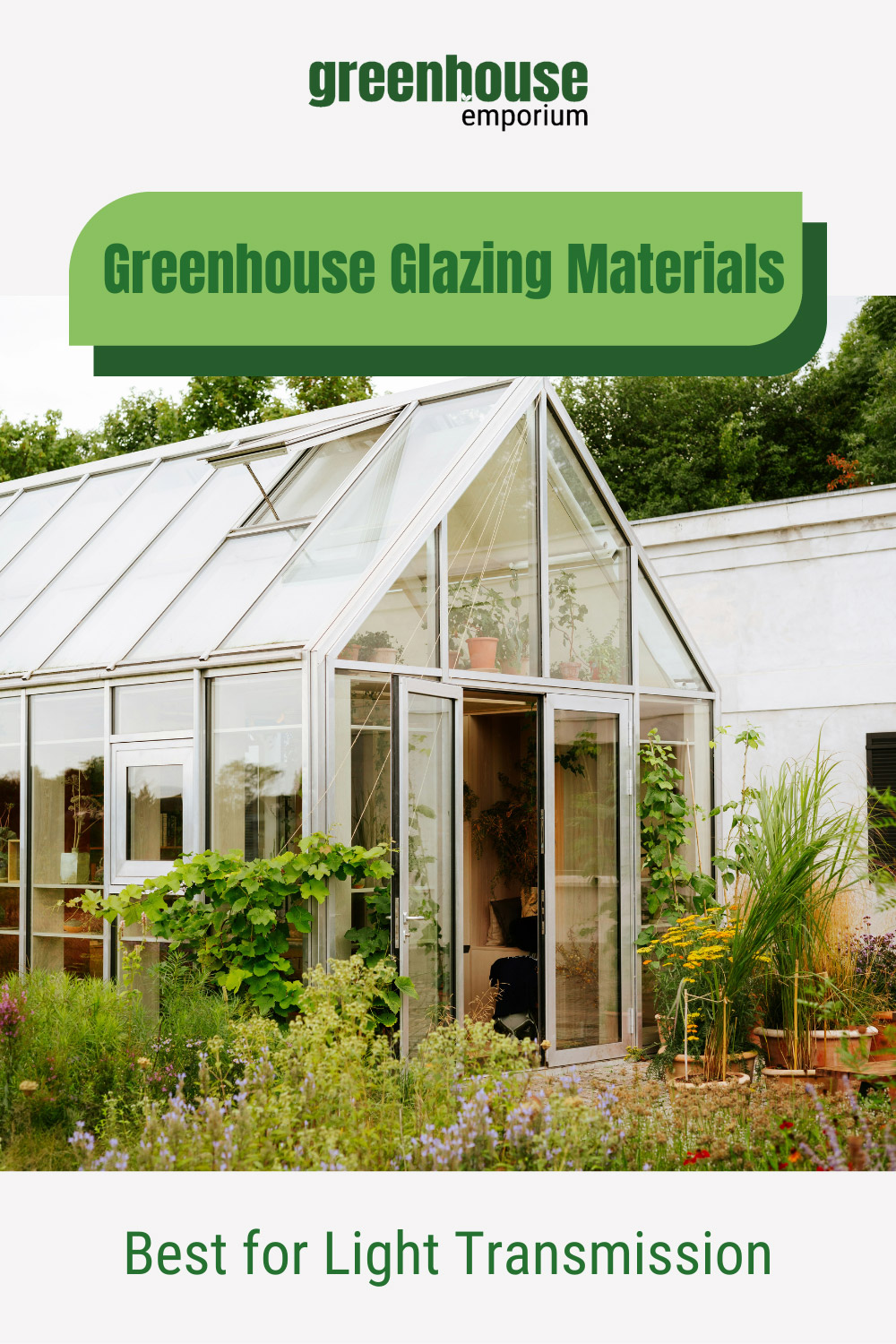
The myth about UV rays and plant growth
A common misconception is that if greenhouse glazing blocks UV rays, plant growth is hindered. However, plants don’t actually need UV light to grow — they need PAR. While UV-A and UV-B rays (in small doses) can strengthen plants and enhance flavor and aroma in crops like tomatoes, excessive UV light can damage plant DNA. Therefore, greenhouse glazing that filters out UV light, particularly UV-B rays, can actually protect your plants from harm.
UV-C light, which is the most damaging, is naturally blocked by the Earth’s ozone layer. Fortunately, UV-blocking glazing still allows PAR light to pass through, ensuring your plants get all the light they need to grow.
How does light transmission apply to greenhouse gardening?
If your goal is to maximize the natural light available for your plants in your greenhouse, you want to first prevent obstruction by other objects such as trees and buildings, which would absorb some light and reduce the amount of light passing through to your plants. The main benefit of greenhouses, unlike typical buildings, is that they don’t have a solid roof absorbing or reflecting solar radiation. Instead, greenhouses are completely transparent to allow light to pass through and reach your plants.
But there are many different greenhouse glazing materials out there, and they are not all created equally. That’s why we decided to put the most popular materials to the test!
Testing which greenhouse glazing material is best for light transmission
We designed a test to see first-hand how different types of greenhouse coverings transmit light. Our results will be sure to help you decide which glazing is better for your greenhouse so your plants can thrive throughout the growing season!
Light measurements: LUX vs. PAR
Originally, we measured light transmission using LUX, which measures the visible brightness of light.

What are lux, you ask? Lux is a unit of illuminance, which indicates the amount of light that reaches a surface. Lumens, which you may have heard of in reference to light bulbs, measures the brightness of a light source, or the amount of visible light. For the purposes of testing how much light reaches plants, we need to look at the amount of lux.
Now, LUX isn’t the best indicator for plant growth since it focuses on light as perceived by the human eye. Instead, PAR is more relevant because it measures the amount of usable light energy that plants can absorb for photosynthesis.
In this test, we use a PAR meter to measure Photosynthetic Photon Flux Density (PPFD), expressed in µmol/m²∙s. PPFD shows how much light (in the PAR spectrum) actually reaches your plants, giving you a more accurate reading of light quality for plant growth.
In short, LUX measures the brightness of light, but PAR measures the quality of light in terms of how much usable energy plants can absorb.
Daily Light Integral (DLI): Beyond instantaneous light measurements
While measuring light at a single moment is helpful, it’s also important to consider the total amount of light your plants receive throughout the day. This is where Daily Light Integral (DLI) comes into play. DLI measures the total number of PAR photons plants receive in a day, expressed in moles per square meter per day (mol/m²/day).
For example:
- Lettuce typically requires a DLI of 12-15 mol/m²/day during its vegetative stage.
- Fruiting plants like tomatoes need a higher DLI of 20-30 mol/m²/day.
Even if some light is filtered or diffused, if your greenhouse is exposed to enough light throughout the day, your plants can still receive the necessary DLI for healthy growth.
Our testing setup
To test which greenhouse covering material best transmits light, we first created a controlled setting: a box with the top removed. The walls of the box directed the light toward our light sensor in the center of the box. We then placed the box outside on a very sunny day without any clouds.
An overview of our greenhouse covering materials tested
We looked at the glazing materials that you are most likely to encounter in your search for a greenhouse covering, including:
Polycarbonate: Polycarbonate is a thermoplastic that is a popular choice for greenhouse covering. It’s widely acclaimed for its strength, durability, and ability to transmit light effectively while protecting plants from harmful UV rays. We tested various brands and also compared how different thicknesses (measured in mm thickness) impacted the light reading. We also tested tinted polycarbonate, expecting a lower light reading as a result of the tinting.
Light-diffusing polycarbonate: Light-diffusing polycarbonate helps scatter light waves, similar to how fog scatters sunlight. This diffusion is beneficial in greenhouses because it ensures that light is spread more evenly throughout the space, reaching all parts of the plants, including the lower leaves. Diffused light reduces the risk of hot spots and light stress, promoting uniform growth across the entire plant. This is especially important in greenhouses where consistent lighting can lead to healthier, stronger plants.
Glass panel: Before the invention of plastic, greenhouses were made from clear glass. Even today many people choose glass for their greenhouse covering because it is aesthetically pleasing and durable. However, glass panels come at a higher initial cost than any other glazing material. Glass does not diffuse light as polycarbonate does, so it may create concentrated spots of light (hot spots) within the greenhouse, potentially causing uneven growth.
Greenhouse poly film: Made from hydrocarbons, poly film or polyethylene (PE) film is a plastic greenhouse film that is economical and easy to install and provides adequate light transmission for growers, but with minimal insulation. We tested both single-layer and double-layer greenhouse grade poly plastic sheets.
Solexx panels: Solexx panels are light-diffusing twin-wall panels made from polyethylene, allowing for high light transmission while also providing durability and insulation–all at a low cost.
Conducting the test for the best light-transmitting materials
Without anything blocking the sensor, we measured 1521 µmol/m²∙s coming from the sun. This represents the baseline light conditions. From there, we covered the PAR meter with each of our 12 greenhouse coverings. We recorded the readings for each material, which you can see in the chart below.
Next, we calculated the percentage of light transmitted by dividing the reading with the material by the baseline reading. This represents the amount of light that your greenhouse plants would receive with the different greenhouse coverings. For example, 4mm glass provided a reading of 1322 µmol/m²∙s, which is 87% percent of the light measured without any covering.
We also kept our LUX readings for reference, but now, with the addition of PAR, you can see how well each material transmits the light plants need most.
table { width: 100%; border-collapse: collapse; margin: 20px 0; } th, td { padding: 12px 15px; border: 1px solid; text-align: center; } th { font-weight: bold; font-size: 1.2em; text-align: center !important; } /* Target the second row of headers and set font-weight to normal */ thead tr:nth-child(2) th { font-size: 1em; font-weight: 400; } /* Center the content in the first row of headers */ thead tr:nth-child(1) th { text-align: center !important; } /* Bold the “No covering” row */ .no-covering-row td { font-weight: bold; } /* Apply light colors to specific columns */ th.par-column, td.par-column { background-color: #f4f4f4 !important; /* Light grey */ } th.red-column, td.red-column { background-color: #ffcccc !important; /* Light red */ } th.green-column, td.green-column { background-color: #c4df9b !important; /* Light green */ } th.blue-column, td.blue-column { background-color: #cce5ff !important; /* Light blue */ } th.lux-column, td.lux-column { background-color: #ffffcc !important; /* Light yellow */ } /* Scrollable table container for mobile-friendliness */ .table-container { overflow-x: auto; }| Material | PAR / PPFD | Red | Green | Blue | LUX | |||||
|---|---|---|---|---|---|---|---|---|---|---|
| µmol/m²∙s | % | µmol/m²∙s | % | µmol/m²∙s | % | µmol/m²∙s | % | LUX | % | |
| No covering | 1521 | 100 | 642 | 100 | 555 | 100 | 324 | 100 | 2910 | 100 |
| 4mm glass | 1322 | 87 | 551 | 86 | 489 | 88 | 282 | 87 | 2580 | 89 |
| 6mil polyfilm single-layer | 1238 | 81 | 532 | 83 | 448 | 81 | 258 | 80 | 2550 | 88 |
| 8mm polycarbonate (Riga) | 1216 | 80 | 518 | 81 | 443 | 80 | 255 | 79 | 2340 | 80 |
| 4mm polycarbonate | 1192 | 78.37 | 509 | 79.28 | 433 | 78.02 | 221 | 68.21 | 2090 | 71.82 |
| 6mil polyfilm double-layer | 1130 | 74 | 492 | 77 | 408 | 74 | 231 | 71 | 2250 | 77 |
| 8mm polycarbonate (RSI) | 1043 | 69 | 443 | 69 | 379 | 68 | 221 | 68 | 2090 | 72 |
| 10mm polycarbonate (Riga) | 932 | 61 | 402 | 63 | 336 | 61 | 194 | 60 | 2200 | 76 |
| 16mm triple wall polycarbonate | 977 | 64 | 423 | 66 | 351 | 63 | 203 | 63 | 2170 | 75 |
| 3.5mm Solexx | 757 | 50 | 344 | 54 | 269 | 48 | 143 | 44 | 1650 | 57 |
| 8mm light-diffusing polycarbonate (RSI) | 711 | 47 | 307 | 48 | 254 | 46 | 149 | 46 | 1680 | 58 |
| 5mm Solexx | 666 | 44 | 304 | 47 | 237 | 43 | 125 | 39 | 1530 | 53 |
| 8mm tinted polycarbonate (RSI) | 602 | 40 | 286 | 45 | 208 | 37 | 108 | 33 | 1170 | 40 |
Result highlights: which covering has the best light transmission?
Once we received readings for all 12 of our greenhouse coverings, there were a few fascinating findings to note:
4mm glass panel
Our 4mm glass panel scored the highest for light transmission, with a reading of 1322 µmol/m²∙s, about 87% transmission. This aligns with our research findings and shows that light passes through glass easily.
Keep in mind that glass does not break the light which means it can create hot spots in the greenhouse.
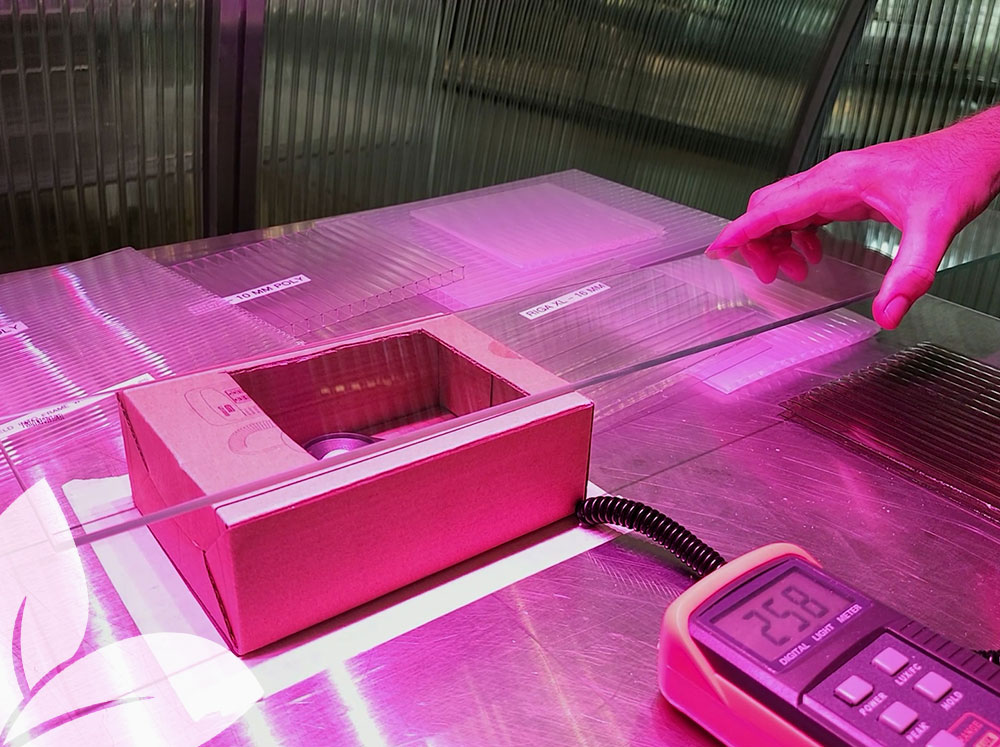
Polyfilm
The second highest score for measured light transmission was the standard polyethylene film, with a reading of 1238 µmol/m²∙s, or 81% of the baseline measurement. However, adding an additional layer of poly film reduced our transmitted light by an additional 13%.
8mm polycarbonate (Riga)
We were surprised that the 8mm polycarbonate from Riga Greenhouses had better light transmission than a thinner 4mm polycarbonate. Usually, we say that thicker polycarbonate reduces the overall light transmission. This wasn’t the case in our test findings.

Even the thicker 16mm triple wall only showed a minimal 3% light loss compared to 10mm twin-wall. Given its ability to also significantly improve your greenhouse’s insulation, this makes Riga Greenhouses’ coverings a desirable choice as a great all-around material, especially if your goal is to grow during the winter months.
The Riga S & L models have an R-value of 2.0 and Riga XL has an R-Value of 3.0. To give you a comparison, 3mm glass has an R-Value of 0.95. Having a higher R-Value will result in less heating costs in winter.
Tinted polycarbonate
As expected, the 8mm tinted polycarbonate from MONT Mojave and Moheat Greenhouses transmits just 40% of the baseline direct light. This can be incredibly helpful if you want to grow light-sensitive plants or if you live in a desert climate where there may actually be too much light.
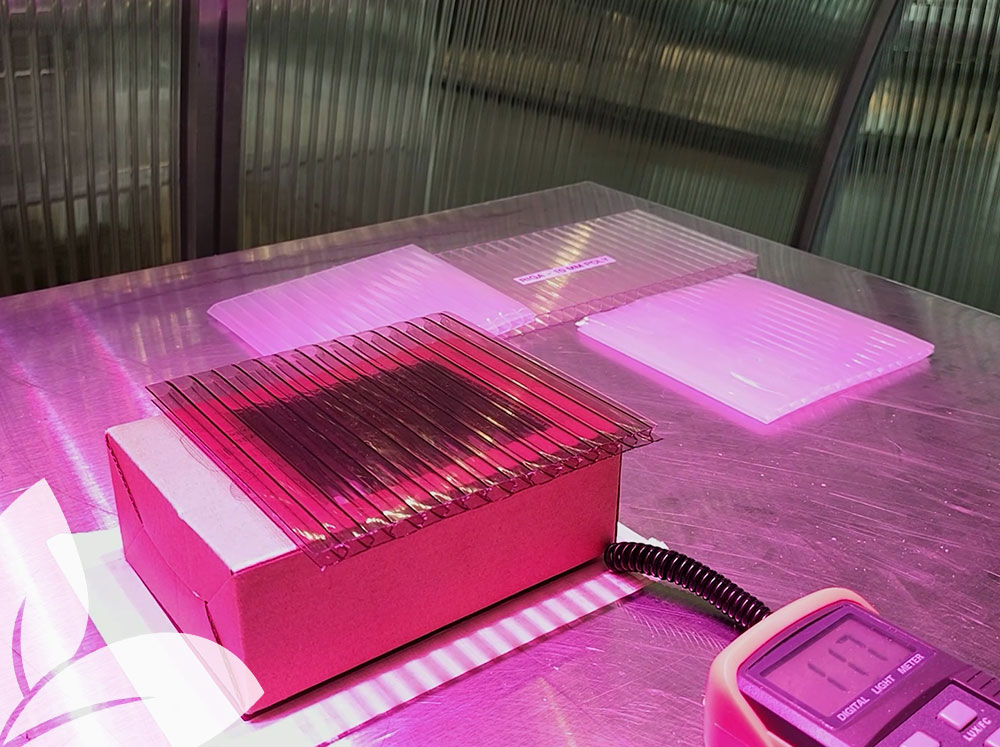
Light-diffusing polycarbonate panels
This result surprised us as they gave a lower reading than expected. The 8mm light-diffusing polycarbonate from Riverstone Industries (RSI) gave a reading of 711 µmol/m²∙s, just 47% of the direct light transmitted. The other light-diffusing panel, 5mm Solexx, gave a lower reading of 666 µmol/m²∙s with 44% of light transmitted. By their design, we expected light-diffusing panels to transmit much higher light readings, so we consulted David from Riverstone Industries to help us understand why we might receive a lower reading like this.
David explained that light-diffusing panels work in unison and rely on light striking them from various angles and reflecting off different surfaces within your greenhouse. This would explain why, in our controlled test scenario with the box, the light did not transmit as well as we might expect. If we had walls made with the same or similarly bright material, we bet the light sensor would have shown a higher number.
Light-diffusing panels are supposed to bounce light off all sides, creating an almost shade-free bright environment. This means plants will get an even light from all sides. This may be most interesting to commercial growers for the maximum yield and Marijuana growers also benefit from the privacy feature.
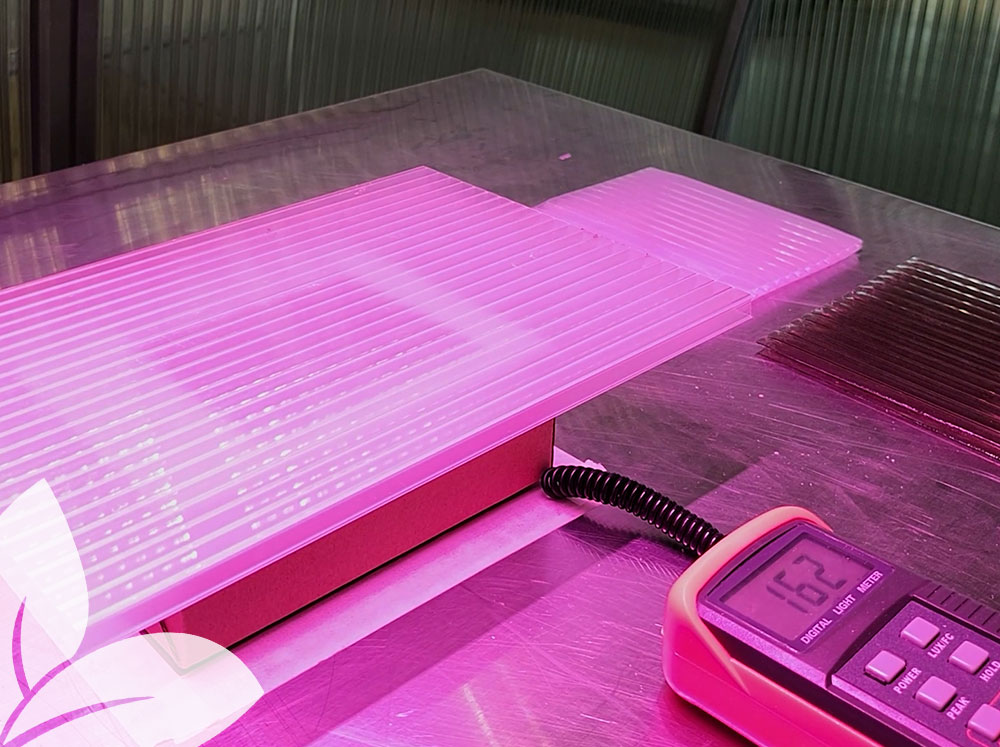
What do these results mean for your greenhouse design?
So, what can you do with these results? While light transmission is a significant factor in choosing a greenhouse glazing material, other variables may impact your decision. Most importantly, you want to consider the types of plants you wish to grow and other factors such as insulation, availability, durability, and budget. It’s also helpful to consider other variables that may impact the amount of diffuse light in a greenhouse, including:
Natural light patterns
In our test, a grow light provided consistent overhead lighting. However, we know that the sun shines light from multiple angles throughout the day.
The intensity of sunlight also varies, with light being stronger in the afternoon than in the morning. It’s also important to understand that light intensity varies depending on the season due to how the earth tilts on its axis. The amount of light your greenhouse receives can increase up to 50% in the summer from the winter, so choosing the right greenhouse covering can help you better manage the transition between the seasons.
Greenhouse location
Depending on where you build your greenhouse, certain features in your landscape may affect the amount of direct sunlight you receive. Light can be filtered through trees, hills, or buildings. Any object that blocks sunlight to your greenhouse will reduce the UV transmission to your plants.
Greenhouse design
Once light transmits through your glazing, you may find other obstructions that provide unintentional shade to your plants, such as overhead heaters, fans, shutters, or light fixtures. Greenhouse height can also factor into how much light reaches your plants, as taller greenhouse walls often reduce shadows from the framing. Fortunately, you can design your greenhouse to help reflect light to your plants by painting frames or benches white instead of black.
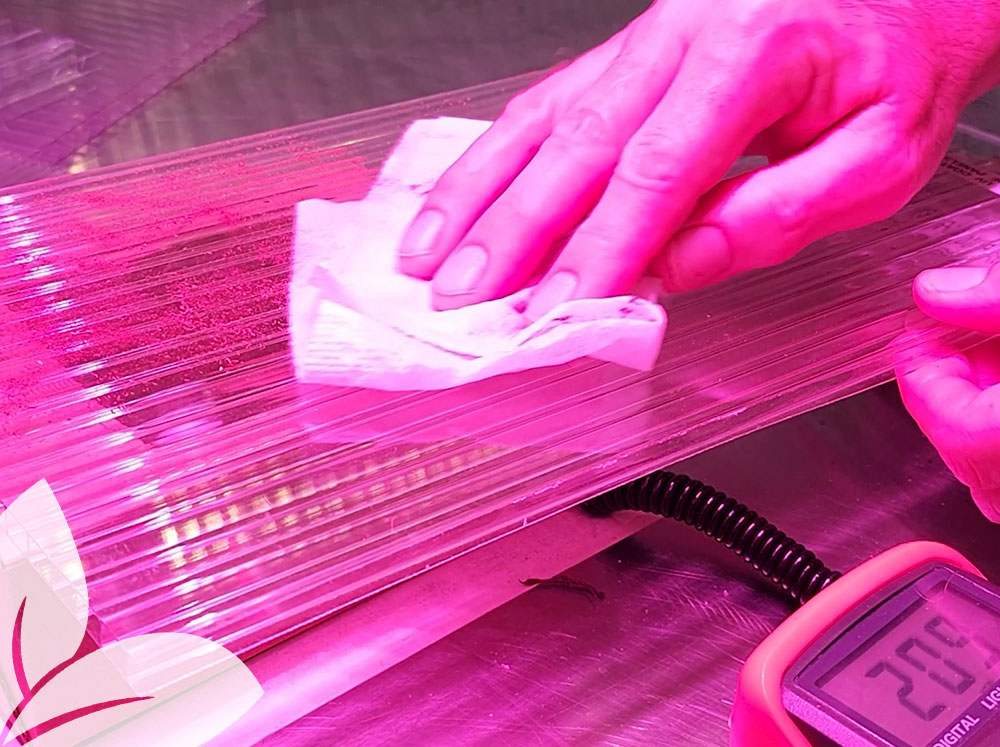
Cleanliness of your materials
In addition to our testing above, we also looked at the difference between clean (2360 lux) and dirty (2030 lux) coverings. Since our greenhouses are likely exposed to the elements outdoors, it’s expected that they may become dirty over time, which impacts the amount of light that can pass through. Make sure that you clean your greenhouse covering in the early spring and again in the fall to allow as much light to pass through as possible.
Choosing the material that works best for you
There are plenty of variables to consider when transferring our test results to your specific environment. While light transmission is essential, you may prioritize other benefits that certain coverings have. Depending on the type of plants you want to grow in your greenhouse, you may prioritize insulation or durability, even if it means having to supplement your greenhouse with artificial lighting.
Ultimately, we hope that our test results help you determine which type of greenhouse glazing material will work best for your greenhouse so you can set yourself up for success!

